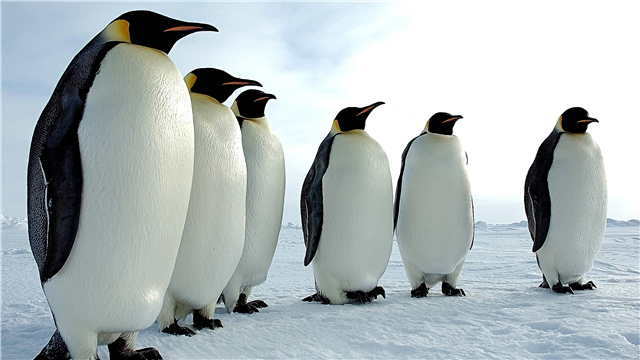
Despite the fact that bumblebee is one of the largest species of bees and terrifies people, in fact, it is considered the most harmless of this family. The name "bumblebee" comes from the Old Slavonic "bumblebee", which means "wheezing", "hum". Now the insect is widespread throughout the world and is divided into many species.
Description
Bumblebees belong to the class of arthropod winged insects and are a type of bee. The original name of the genus in Latin sounds like “Bombus”. Creatures are widespread on Earth, live in all corners of the planet, where there are suitable living conditions. Zoologists now know about 300 different species of insect, which belong to fifty subspecies.
The most common are two species of bumblebees: Bombus terrestris and Bombus lapidarius. They live in most countries.

You can distinguish a bumblebee from the rest of the bees in large sizes and rounded body contours. Thanks to the hairs on the body, they adapt well to cold climates and do not freeze. They are also considered warm-blooded insects. With rapid movement, their body begins to produce heat, and the internal temperature can reach forty degrees.
People have a stereotype that a bumblebee bite is very painful, and in general it is better to beware of an insect. Such fears arose because of the large size of the creature and powerful jaws. However, in fact, this species of bees is the most peaceful and harmless.
Interesting fact: a bumblebee sting is smooth and has no notches, unlike a bee sting. If in the latter it remains a victim, then a bumblebee, having made a bite, can draw it back into the body and fly away.
Bumblebees never attack first. They do not use the jaw as a weapon, despite their power, and the only protection is the sting. But the individual will use it if there is no other way out. Moreover, only females and insects building the hive have it. Ordinary males have no sting and are almost completely defenseless. In nature, a bumblebee is of great benefit by pollinating a large number of flowers.
Appearance and features

Bumblebee has a massive body in comparison with other representatives of bees. Impressive dimensions are achieved due to the developed pectoral muscles. They also serve as an additional source of heat along with a cannon. In cool weather, the insect begins to intensively contract muscles, thereby increasing body temperature. This helps to warm up the body and go on pollination of flowers earlier than other types of bees.
On the sides of the body there are three pairs of limbs: two small legs in front and four large legs coming from the center. Bumblebees fly thanks to two wings located on the front of the body.
The color of bumblebees is black, with two yellow stripes on top: at the head and under the wings. There is also a white stripe in the sting area. The whole body is covered with small hairs, which set the color pattern.
The head is rather small in relation to the body. Upstairs are two long antennae, planted next to the eyes. A powerful jaw is placed in front, inside of which a long tongue hides.
Depending on the type, the insect can be of different sizes. Steppe bumblebees are the largest and can grow to a length of 3.5 cm. In common species, males reach 2.5 cm. Females are larger: their length reaches 2.9 cm. The body weight of males does not exceed 0.6 g , but in women it often exceeds the mark of 0.8 g.
Where does the bumblebee live?

Due to good adaptation to environmental conditions, bumblebees live in almost all corners of the planet. Exceptions are places where there is very little vegetation, as well as with a hot climate.At high temperatures, the insect begins to feel uncomfortable due to the fact that its body already generates a lot of heat during activities.
In some places, the number of bumblebees is small. For example, small populations of certain species adapted to cold climates and capable of pollinating local vegetation live beyond the Arctic Circle. On the territory of Greenland, Alaska and Chukotka, they can be met only in alpine meadows. Small populations occur on lands with a tropical climate.
Interesting fact: in some countries, gardeners specifically bred garden bumblebees to increase productivity.
Most species of bumblebees live in Russia, Europe, Asia and America. They like the local climate and plentiful vegetation. Not so long ago, insects were specially brought to Australia, in the state of Tasmania. There they are used to increase the yield of clover, and bumblebees cope with their task by five points. Peacefulness simplifies the process of their use.
Bumblebee habitat and lifestyle

Since several hundred species of bumblebees live on Earth, each one has certain characteristics, depending on environmental conditions and habits.
In Africa, Bombus terrestris lives. It has a black color with small white spots on the belly. These bumblebees build their hives in the ground, working individuals are engaged in this.
In Europe, Bombus lapidarius is common. On its black body there are red-orange stripes along which it is easy to distinguish it from the rest of the bee representatives. If the African type of insect grows up to three centimeters, then this in length is usually no more than two. They build their nests on stones. Also, cannibalism is characteristic of this species: females often feed males to their larvae.

Regardless of the species, bumblebees live in packs and have a clear separation of roles: uterus, males and workers. The uterus is actively involved in the life of the nest and produces offspring. Males and workers are engaged in approximately the same activity, but the former pay more attention to pollination of flowers, and the latter more to expand and strengthen the house. If the bees try to carefully work out the nest, planning the entrances and internal structure, then bumblebees often neglect this. Their houses look shapeless, as if whipped up. The material used is fur and wax, which simply pile into a pile, tunnels burst inside.
Interesting fact: in order not to build a nest, bumblebees can occupy a mouse hole, having driven out the former resident from there.
Bumblebees are very hardworking and go to pollinate flowers every day. At the beginning of the day, the uterus climbs onto the roof of the nest and begins to make loud noises, thereby awakening all the members of the pack from sleep. Waking up, insects go to work.
Where do bumblebees winter
Together the flock lives until the onset of cold weather. Before winter, the uterus is fertilized for the last time from males and hibernates, the remaining members of the hive freeze. Females wait colds underground, digging 15-20 cm deep. Usually a wintering place is next to the nest. When warm time arrives, the uterus comes out of suspended animation, builds a nest, raise offspring, after which their life comes to an end. And the grown individuals continue their activities.
How many bumblebees live
Depending on the role played, the bumblebee lives a certain amount of time. Working individuals can last only a couple of weeks due to continuous exhausting work. Males live in the region of the month, and females go to the other world after wintering and raising offspring.
What does a bumblebee eat?

Perhaps these creatures are the most finicky of the bee squad in terms of food. If wasps can eat jam, honey, tree sap and other sweets, then bumblebees have only pollen and nectar in their diet. However, the list of plants from which they collect food is very long. They pollinate almost all the flowers that grow in their habitats.It is often used in gardening. If a hive has appeared near the garden, there is no doubt that in the near future there will be a large crop on the beds.
Larvae also need food, so when they return to the nest, individuals try to bring as much nectar as possible, which serves as food for future offspring. If necessary, the cubs are also fed with honey of their own production.
The most favorite flower of the bumblebee is clover. He is attracted to the smell and color of the plant, and flying past he can not resist. It has also been observed that bumblebees, just like other bees, are more likely to sit on bright buds than on those that have a faded color. However, if there is no other vegetation nearby, the insect will not disdain to land on them.
Character Features

Bumblebees live in small flocks. Often the total number of individuals does not exceed hundreds. They are divided into large queens, responsible for the production of offspring, males and small working insects. Despite the developed social structure, the individual is not attached to the nest and at some point may not return to it and find a new home, having joined another flock. And basically this is what males do, who have already helped females with the production of offspring.
Bumblebees have a calm character, they are not in conflict, they prefer to use a sting only in extreme cases. Perhaps such a peacefulness in them is due to the fact that they are in no way dependent on other living beings, so it makes no sense for them to enter into a confrontation with someone. The only thing that bumblebees need is enough flowers for pollination. Traveling through the meadows, they spread seeds on their feet, contributing to the emergence of new vegetation.
Social structure and reproduction

Like most representatives of bees, bumblebees have a clearly formed social structure. The insect lives in packs led by uterus. In early spring, they go in search of the male for the production of offspring. After leaving the male, the female actively eats so that the eggs form correctly.
After several weeks of heavy absorption of food, she begins to build a nest. Having done a lot of work, the uterus settles in a new house, where it lays eggs. Usually at a time there are about 15 of them. They are oval and not more than 4 mm. Larvae hatch on the seventh day after laying. Within 20 days, the cubs eat pollen, and then curl up in a cocoon. And after two and a half weeks, bumblebees are born. Hatching workers begin to engage in construction, the uterus continues to produce offspring.
Interesting fact: if there are not enough females in the flock to quickly increase the population, they will be replaced by working individuals who are also able to lay eggs.
So bumblebees live all year round, before the onset of frost. The uterus produces new offspring. Moreover, workers most often take care of the latter: they bring pollen to larvae and protect them. The female is only required to lay eggs as far as possible.
Natural enemies of bumblebees

Despite the friendliness, the bumblebee has many enemies. The main one is considered an ant. Since the representatives of the bees build their nests on the ground, these insects regularly visit them, steal the larvae and destroy the house, pulling it to pieces. Also, ants are attracted to honey, which can be enjoyed. Bumblebees try to defend themselves, but since their flock is not numerous, and most individuals go to collect nectar during the day, protection is often ineffective.
Troubles can bring birds, animals and other insects. For example, foxes, hedgehogs and dogs find hives and eat larvae. Cannabis flies see bumblebees as a reliable incubator for future offspring. The female catches up with the representative of the bees and lays a larva in it right on the fly. The latter grows inside, feeds on organs, and finally ripens, crawls out.
Of related species, bumblebees can conflict with wasps. There are certain species that attack to eat honey, while others raid to eat offspring.
Species of bumblebees
About 300 species of bumblebees live on Earth, which have certain characteristics. Some of them are common in many countries, while others are found only in a small area.
Common bumblebee

He lives in the European region of the Russian Federation, as well as in western Europe. Despite the fact that it is quite common and is the most famous species, it is listed in the Red Book. Its dimensions reach one and a half centimeters, and the appearance is familiar to every gardener: a black body with yellow stripes and a white speck at the end.
Garden bumblebee

It has a light color with black stripes on top and a dark belly. A long proboscis is hidden inside the jaw, which helps in pollination of flowers. The specimens are usually larger than the rest of the species: the uterus can reach 2.5 cm. Garden bumblebees are used in the summer cottage, because thanks to them, plants bloom much better. There is an insect in Europe, Iceland, Zealand, Transcaucasia and the Urals.
Forest bumblebee

He prefers to settle among trees and pollinate fruit and berry plants. He likes a warm climate, builds nests from chips and dried grass. Also does not disdain to occupy the burrows of rodents. Outwardly differs from other species: it is small in size and faded with a grayish tint.
Armenian bumblebee

Prefers to pollinate legumes, contributing to their spread. It is found in Ukraine, Russia, Europe, Asia, Iran and the Caucasus. Everywhere the insect population is not numerous, which is why it is considered quite rare. Individuals grow up to 2-3 cm in length, have bright yellow stripes on their backs and brown wings.
Earth Bumblebee

One of the most useful species for humans. Earth bumblebee specializes in pollination of vegetables and berries, which is why it is often bred artificially. Individuals collect pollen on their body, and then transfer it to other fruits, contributing to their spread. Insects pay special attention to peppers, tomatoes, blueberries, cucumbers, strawberries. Externally, they stand out in a light color: black stripes alternate with bright orange. The species lives in Europe, Asia, Russia and other countries.
Origin of the species

Scientists believe that bumblebees appeared about 30 million years ago, during the Oligocene. But the found remains of insects of that time are poorly preserved, and the data obtained during the study are not enough to prove their belonging to this species.
Interesting fact: Most insects of the past are studied on the basis of representatives of species found in wood resin. But bumblebees, because of their large size, do not fit in a drop of sticky substance, so meeting their fossils is a great success.
The oldest remains of insects, which exactly belong to bumblebees, date back to the Miocene, and they are about 20 million years old. It is believed that this species of bees appeared in Asia, from where it gradually moved to Europe. After some time, he reached America.
Over the past two centuries, a dozen remains of bumblebees, which are from 10 to 20 million years old, have been discovered. Moreover, the finds were made around the world, on different continents.
Population and species status

Bumblebees live on all continents of the planet, except Antarctica. Their number is quite large, and nothing threatens the mind. Moreover, since these insects play an important role in nature and gardening, people often breed them on their own. Despite the presence of some enemies from animals and insects, bumblebees quickly compensate for any losses due to prolific queens.
Yes, on Earth there are some subspecies of the bumblebee, whose population sizes are small, but even they are not on the verge of extinction.
Do bumblebees make honey?

Just like bees, bumblebees make honey, only it has slightly different properties.The product of this insect is more liquid and has a light color. Also, it is not as sweet as that of bees. But it has twice as many vitamins and nutrients.
Honey bumblebees are stored in oval honeycombs, similar to barrels. However, the liquid begins to ferment after a few days if the ambient temperature is more than three degrees.
Bumblebee breeding at home

Bumblebees are very useful in gardening, so many gardeners decide to engage in their breeding. As a rule, about 50 individuals from the same family inhabit the pre-prepared nest. This ensures that they get along well with each other, distribute roles and begin pollination of plants.
If the settlement was successful, the uterus quickly proceeds to the production of new offspring, and the working individuals begin to establish an economy. Before the onset of cold weather, the owner needs to thoroughly feed the female so that she survives the winter.
Aerodynamic performance

For a long time it was believed that bumblebees can fly contrary to the laws of physics. Indeed, a massive body carried on one pair of small wings is a rather unusual sight. However, physicist Jane Wang from US University was able to prove that there is nothing surprising in flying a bumblebee.
For several hours, the scientist simulated the passage of dense wind flows through the moving wings of an insect and found that this process is fully consistent with the laws of physics.
Bumblebee guard

Since there are several hundred species of bumblebees on the planet, it is not surprising that some of them are on the verge of extinction and are listed in the Red Book. There are several reasons for reducing the population: environmental degradation, lack of sufficient food, enemies who settled nearby, etc.
Interesting fact: some species of bumblebees gradually disappear, because in their habitats the types of plants suitable for them have disappeared, and they basically do not want to switch to others.
At the moment, the person does not take any measures to protect bumblebees. This is due to the fact that along with endangered species, there are those that, on the contrary, are increasing their populations. Due to them, the bumblebee family as a whole does not die out, which is the main argument in order not to take any measures.
Bumblebee in heraldry
The image of an insect is found in heraldry. The Hummeltal commune in Bavaria uses a bumblebee as one of the elements on its coat of arms. And for the former Estonian volost of Hummuli, he was at all the main symbol.












